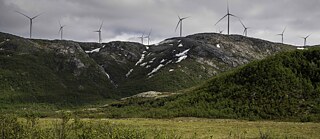Eco-Colonialism
The New Age of Threats to Indigenous Peoples

If you were to search “green colonialism” or “eco-colonialism”, you would find an array of quite recent examples, where Indigenous Peoples and other vulnerable groups are battling land conflicts in their area. Now, it is safe to say that land conflicts are nothing new to Indigenous Peoples - indeed, land conflicts may be the one thing that they all have in common. But in the age of the climate crisis, a new type of land conflict has arisen to threaten their livelihoods, cultures and survival.
By Petra Laiti
Land conflicts and land disputes traditionally originate from colonial states having annexed the power to govern and make decisions on land use and land rights, as opposed to the local Indigenous Peoples. Historically, Indigenous land stewardship may not have been either recognised as such or was willfully denied by colonisers. As Indigenous Peoples around the world were violently relocated, assimilated, and oppressed, colonising states forcibly established control over the lands that they had lived on for thousands of years. To this day, Indigenous Peoples refer to annexed lands as “stolen lands”, and rightfully so.
Contemporary Land Conflicts and Indigenous Peoples
For those not in the know on Indigenous issues, it may sometimes be shocking to learn that violent land conflicts between Indigenous Peoples and colonisers still exist to this day. A tragically iconic contemporary example is the Dakota Access Pipeline conflict in North Dakota (USA). Starting in 2016, the Dakota Access Pipeline was rerouted near the Standing Rock Sioux Reservation. The tribe voiced their opposition to the pipeline due to fears of the pipeline polluting their water supplies. This opposition grew into a worldwide protest movement, with a protest camp forming in North Dakota. Eventually, tensions between law enforcement and the protest movement grew and erupted into a conflict of police and military violence towards the protesters. Thanks to social media, the terror and violence felt by the tribes were broadcasted to millions of viewers, attracting support and solidarity from Indigenous Peoples across the globe.The events at Standing Rock showed a contemporary example of what the general public has come to associate Indigenous Peoples with: protecting land and water from polluting industrial ventures. However, as the climate crisis has changed the way we see the world, so has it changed what constitutes a worthwhile venture. We already know which industries will need to be replaced in the coming years to keep the planet inhabitable. Energy and infrastructure ventures with a risk of pollution, such as the Dakota Access Pipeline, represent the past. It would be plausible to assume that clean, renewable energy sources are here to make a turnaround not just in terms of emission cuts, but also in producing ethical energy. However, worrying developments in recent years show that Indigenous Peoples are inherently vulnerable in the face of any land use venture, no matter what the cause.
The Sámi Wind Power BATTLE
Wind power is seemingly a perfect solution to building energy sources in the Arctic. They work in polar night circumstances, where solar power does not. They do not need a barred area and animals could roam freely among them. Furthermore, they produce renewable, clean energy, which Indigenous Peoples sorely need to protect the declining biodiversity in their lands. But the Sámi have experienced a dark side to the industry.The Sámi lands are rural, stark areas with extremely fragile nature. Reindeer herding, the staple livelihood of Sámi culture, requires vast amounts of land, as the reindeer are seasonally herded across Arctic landscapes. The wilderness is immense, with roads placed few and far between. If one was to build mass wind turbines on Sámi lands, one would often need to build all infrastructure around the turbines themselves. Roads, electricity lines, temporary housing for construction workers and so forth, which would already cause damage to the fragile lands before the wind park is even in use. But what truly worries the Sámi are research results that show that reindeer are afraid of wind turbines and frequently avoid wind parks, particularly in times of calving. Thus, it would not matter that wind parks are unprohibited areas, since the reindeer will avoid the area anyway, pushing the animals into narrower territories and causing increased pressure on biodiversity in increasingly smaller areas of land.
If a mass-scale wind park devastates an Indigenous community and robs them of their livelihood, can it truly be called sustainable, clean or ethical?
Wind parks seem to have become one of the largest land conflicts the Sámi have faced in recent years. Norway, in particular, has gone ahead with several massive wind parks on Sámi lands, leading the Sámi to protest and to ultimately take legal action to fight for their rights. As of now, two cases of wind parks versus the Sámi are to battle it out in court. The intense rights battles have put a stain on these sustainable development ventures, because they beg the question - for whom are these ventures built? If a mass-scale wind park devastates an Indigenous community and robs them of their livelihood, can it truly be called sustainable, clean or ethical? Indigenous Peoples would argue of course not.